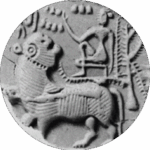Frawley, comparing Ramana Maharshi and Sri Aurobindo
In his The Creative Vision of the Early Upanisads David Frawley says, “Those who regard the idea of the direct realization of the Absolute as an invention of the Upanisads or Buddhism do not understand the inner implications of Vedic symbolism.. however, the Veda does have, at the same time and with not much sense of contradiction, a more creative side to the Self and a greater affirmation of creation… As we now begin to approach another age of light, that creative truth and way to the Self may again become possible, not in the dualistic fashion of medieval dualistic Vedanta but in the creative vision of the Vedic seers.”
In modern India these two kinds of seers are most represented by the two foremost sages of the time-period, Ramana Maharshi and Sri Aurobindo; the former being the supreme of the seers of the uncreate Brahman and the latter the supreme of the seers of the creative Brahman. The former represents the ultimate modern simplification and practicalization of the direct approach to the Absolute, while the latter represents a resurgence after some three thousand years, in a new and modern language and approach of the seers of pure Creation and Divine Life. They were contemporaneous in age, even dying the same year, and resided only a few miles from each other at their Ashrams in South India. Though their teachings seem rather different, perhaps even contradictory in some aspects, they reflect the vast range of the twofold Vedic teaching, as it continues to transform itself according to the needs and potentials of man as it has done so since the beginning of this time-cycle.”
